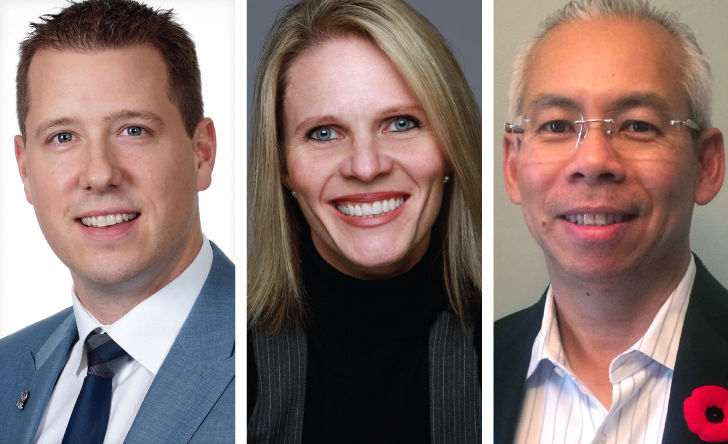Consolidators will continue to gobble up firms weakened by regulation, compliance, and the need to invest in technology to keep pace with competitors. Many acquisitions have already taken place, and the trend will continue in 2017.
Managing General Agencies are racing to achieve the volume needed to absorb costs and increase profits by earning the maximum bonuses offered by carriers. Investments in technology are also key at a time when on-line sales and FinTech are shaking up traditional distribution channels for insurance and investment funds.
According to Yan Charbonneau, CEO of Quebec-based AFL Groupe Financier, MGAs without a niche and just two or three direct distribution contracts are critically short of this needed volume. Struggling under the weight of compliance, they will be swallowed whole, he added. If MGAs don’t consolidate, financial institutions could soon be lining up to acquire these fragile firms, he notes. “When the day comes that banks can buy these businesses, they will jump at the chance,” he predicts.
Maximizing bonuses
Charbonneau recalls that insurers such as iA Financial Group have already jumped on this bandwagon. “Since National Financial Insurance Agency (NFIA) has been backed by iA in financing its acquisitions, it has been buying up everything in sight to maximize its bonuses from all the other carriers, explains Charbonneau. Neither RBC Insurance nor BMO Insurance has reacted yet, but it’s only a matter of time before they do. National Bank Insurance has begun buying group insurance firms. Of the 15 MGAs in Quebec, only about half will survive, including maybe five independents.”
Charbonneau stresses that earning maximum bonuses from insurers is critical, but their criteria have changed. “Before, they would give a direct contract to an MGA in return for a large volume of premiums in force. Now, they are imposing sales quotas. So, to earn bonuses, they must first hit the top compensation levels. Even Quebec’s largest MGAs don’t earn maximum bonuses from all their carriers,” he explains, adding that only the biggest Canada-wide agencies achieve that feat. “Often, MGAs must concentrate their production on star products from a limited number of insurers.”
Toronto-based Hub Financial has 6,000 consultants across Canada. Focused primarily on life insurance, it has assets under management of $6 billion, including both mutual funds and segregated funds. One of the largest MGAs, Hub Financial has acquired five firms in the last five years. In an interview with The Insurance and Investment Journal, Terri Botosan, its CEO, noted that Hub aims to acquire more companies, possibly in Quebec, where it already has offices but wishes to expand its presence.
Strong discipline
Whatever its size, any MGA requires strong discipline to control costs and overcome the obstacles in its path, notes Botosan. She believes that consolidators won’t necessarily be the only ones to meet the challenges facing MGAs, but it’s hard to predict who will make the cut.
“There are a lot of great firms out there that are just regional players, or that have a very narrow niche market, but who do a great job for their clients,” she says. “Having done many acquisitions, my advice to those wishing to acquire a business or find a partner to gain resources or a broader shelf of products is this: it’s a long process. Plan the acquisition carefully and look at all your options. Make sure you choose the right partner.”
Botosan believes that a disciplined approach to expense management and cost control will help companies in her sector to remain profitable. “Make sure to add value to your advisors,” she says. “That will continue to drive revenue for them and for your own firm.”
Growth and profitability are vital for an MGA, adds Kevin Cott, president of Qualified Financial Services (QFS). “If your profit margin is small and your profitability low, you’ll be acquired. Few of the MGA’s we’ve acquired were profitable – maybe just two of them. With the others, the owners were living on the margin, with no remaining profits,” he notes.
Pressure on small MGAs
The MGA channel has changed considerably over the past decade as a result of consolidation and regulation, Cott adds. “If you’re a small general agency, you have the same expenses as larger ones: compliance, technology, operations, fixed assets. But a larger agency is in a better position to absorb them, with minimal impact on its profitability,” he says.
With six acquisitions carried out in the last five years, including that of Quebec-based Groupe Goldman in 2014, Cott says that, in 2017, he now has more than 1,000 active advisors and manages assets of $1.5 billion in segregated funds. “Last year, we had twice as many advisors earning more than $100,000 in first year commissions. We hosted our own annual and bi-annual conferences, provided advisors with a top-notch technology platform, held sales campaigns and numerous professional development events, provided excellent one-on-one support, and paid highly competitive overrides, all while remaining profitable,” he concludes.
Michael Williams, president of the Canadian Association of Independent Life Brokerage Agencies (CAILBA) and CEO of BridgeForce Financial Group (BFG), says he’s an active acquirer. “We had one acquisition last year and we’re working on a couple more. We’re very active. It takes two years for us to complete an acquisition. We have nine offices in Ontario and one in British Columbia, where we formed a partnership leading to the creation of BridgeForce Pacific Place. We’re seeking a presence in Quebec and Alberta. Almost 90% of our life business comes from those four provinces.”
“Our culture is very different from that of other consolidators,” Williams continued. “We’re a regional player. Our strategy is a little different, and we don’t think we have to be the biggest. There’s enough business in Canada for both the top MGAs and the niche players.”
Although BFG is not a national player like PPI, Financial Horizons Group, Hub Financial, and IDC Worldsource, Williams believes BridgeForce has the critical size to absorb compliance costs, for example. “We were already ahead of the curve even before the CLHIA [Canadian Life and Health Insurance Association] introduced its G8 guideline. We have a compliance team headed by a vice president.” The G8 guideline covers advisor suitability, describing the expectations of insurers regarding the screening and monitoring of advisors and the reporting of irregularities.
Williams notes that BFG maximizes all its contracts, with its eight largest carriers (including the big three – Manulife, Sun Life Financial, and Canada Life) accounting for 83% of its business. “Acquisitions are always on the go, but this year, we plan to streamline our operations,” he says. “We currently have two back office systems, but in the third quarter, we’ll move all our offices to WealthServ [Bluesun]. We’re constantly making changes, looking for ways to help advisors grow their business.”
Financial Horizons Group is also busy making acquisitions, with its latest – Estate Financial – having just closed on Feb. 1. John Hamilton, president of Financial Horizons, announced that his company had acquired 100% of Estate Financial’s shares and that its two New Brunswick offices – one in Fredericton and one in Moncton – would remain open. The company wishes to increase its presence in Eastern Canada. “The acquisition of this company is another strategic step in the growth of Financial Horizons Group as the leading MGA and financial services company in Canada,” says Hamilton. Andrée McLean, president of the acquired company, explained that it had decided to sell because it needed a more diversified product offering.
Another way to grow
Ever mindful of the growing role played by banks in the distribution of insurance products, Yan Charbonneau is taking a proactive approach with the simultaneous development of two separate business lines: life and health insurance and property and casualty insurance. In 2016, he purchased Deslauriers & Associates, a Quebec-based P&C insurance brokerage, from Robert Bournival.
“Banks sell insurance because clients go there anyway. So independents will have to gain clients’ trust by offering them a different model. That’s why I decided to go into P&C insurance. Clients want to have all their policies with us, even though the two business lines are completely different. If I grow both equally, I’ll develop specialists in both areas at the same time,” explains Charbonneau.
AFL is currently forming a company with friends who are IT buffs. Together, they plan to develop a platform that will host all their products. “It will be for internal use only,” he says. “Right now, industry systems are still unable to talk to each other. In P&C insurance, there’s a common language. In life insurance, adopting the CITS data feed recommended by CLIEDIS seems to be an excellent objective, but can we hope to see the results in our lifetime?”
Charbonneau believes it would be possible for an MGA to develop an in-house platform to standardize the exchange of electronic data with various sources. And this could lead to strong growth. “I gained 15,000 clients with Deslauriers and Associates,” he says. “I can engage in cross-selling of P&C and life insurance with these clients. For example, I have a financial security advisor with fifteen years’ experience with contractors’ insurance who works with a P&C insurance broker who also has fifteen years’ experience.”
Charbonneau also counts on the services of Hugo Neveu, a successful advisor he recruited to manage and develop his insurance and mortgage activities. One of Neveu’s responsibilities will be to identify clients and situations that create cross-selling opportunities throughout the organization.









